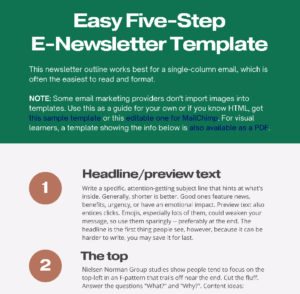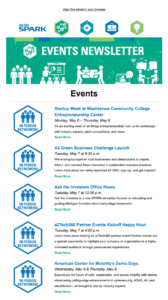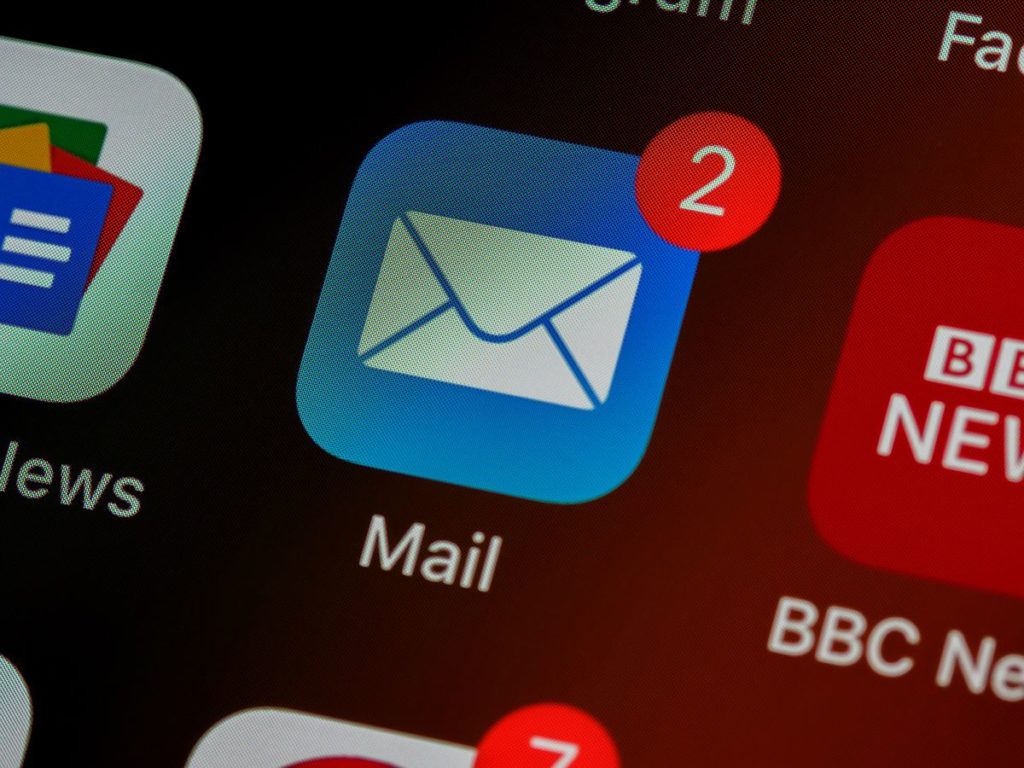What Are the Elements of an Effective Business Newsletter?
An effective business newsletter contains a clear format, design, and writing. Yet many business promotion emails don’t follow this best practice, potentially losing sales.
With ten years of experience, I’ve used clear email content and a simple layout to enhance engagement. If you struggle to keep publishing, see my e-newsletter packages or get a free audit.
How Email Marketing Helps Business
- Repeat advertising – Consistent e-newsletter marketing builds brand awareness, trust, and customer relationships. Per the Marketing Rule of 7, the average customer must see a message at least seven times before they will buy.
- Cheap, competitive advertising: Compared to other marketing channels, it’s among the most affordable. A low-cost email campaign that yields sales can turn a profit.
- Easy access to metrics: you may check open, click-through, or response rates quickly to measure your campaigns’ results.
- Targeted and personalized messaging: segment your list by customer demographics, behavior, and interests. Emails with personalized subject lines are 26 percent more likely to be opened.”
- Direct marketing: Automated email campaigns nurture existing leads through the sales funnel.
- Brand loyalty: engaging content keeps readers interested in your offerings, helping you build long-term bonds with them. According to a March 2024 Constant Contact study, the average open rate across all industries is 38 percent.
What is An Effective Business Email Marketing Strategy?

Start by defining your email goals. Do you want to highlight your expertise? Showcase your products or services?
Aligning content to clients’ needs guides them through the sales funnel effectively. Address readers at all stages of the buyer’s journey. Offer educational material for those becoming aware and more in-depth information for readers exploring their options.
Elements of Effective Business Newsletters
- Subject Lines
- Use clear, concise language
- Add power words, numbers, scarcity, or other emotion-evoking methods to attract attention
Example: 5 Little-Known Tax Strategies for Small Businesses
- Structure
- Follow the AIDA (Attention, Interest, Desire, Action) or inverted pyramid formats. Studies show people read online content in an F-shaped pattern.
- Ensure a logical flow: place the most important content at the top
- Use sections/headings for easy scanning
- Add clear, strategically placed calls to action
- Engaging Content
- Provide helpful information tailored to your audience’s interests and pain points
- Use a conversational, personable tone that aligns with your brand voice. Discover how to write a newsletter article for business. More resources: read Writing a Business Newsletter, How to Create a Professional Email Newsletter, or How to Write a Law Firm Newsletter.
- Tell stories to build trust and make content relatable
Example: Share a client success story highlighting your expertise
- Personalization
Segment your email list and customize content based on readers’ interests and behaviors.
“To make e-newsletters more appealing to readers, it is important to customize content based on customer preferences, past interactions with them, and their specific requirements. Similarly, you may want to segment your email lists so you can send targeted messages that resonate with different kinds of people within these industries.”
Keran Smith, co-founder and cMo, lyfe marketing
- Readability
Ensure accessibility by using descriptive alt-text, proper color contrast, and easy-to-read fonts.
A focused approach — for any business, regardless of the type or size — yields content that connects and inspires action.
What is An Effective Business Email Marketing Template?
The downsides of e-newsletter marketing include the perception that emails are spam and “list fatigue,” when subscribers lose interest in your messages. To minimize these issues, follow these best practices:

- Quality: a layout should include mobile-friendly design and accessibility features. Responsive design automatically adapts the layout and content to fit any screen size, ensuring it’s readable on smartphones and tablets.
- Template Options:
- Basic Layouts: Simple structures for easy content organization.
- Industry-Specific: Imagery and layouts relevant to your field.
- Multimedia: For videos and interactive content.
- Curated Content: Information culled from various sources.
- Product/Service Showcase: Highlight products, services, and special offers.
- Event Promotion: Designed for upcoming promotions.
3. Text and Visuals: Put the most important information at the top to maximize engagement.
4. Legally-Compliant Footers: Anti-spam laws like CAN-SPAM (U.S.) and GDPR (Europe) ensure responsible email marketing.
Resources:
- 100+ Free Helpful Email Marketing Resources Every Marketer Will Find Useful
- Email Marketing: The Ultimate Guide (Expert Tips + Data to Know)
Many email marketing platforms offer customizable templates for professional, attractive, and on-brand newsletters.
What is a Sample Business Newsletter?
The Ann Arbor SPARK (AAS) e-newsletter follows many of these best practices:
- Compelling Headline: Entice readers to open the email.
Instead of their usual headline, “Check out these upcoming events in Ann Arbor!,” AAS could feature an event or a common theme.
Example: 14 Must-Do May Events in the Ann Arbor Area
It copies the headline of one of the feature articles (only cutting and pasting is required 🌝).
- An Engaging Content Structure: A clear and concise layout with informative, audience-focused information (e.g., news, testimonials, CTAs).

The clear format, with colorful headings and images separating the events from the features, ignites interest. The events section could be organized into two columns by date to reduce scrolling.
- Visual Appeal: Quality images, consistent branding, and readable fonts foster engagement.
The AAS e-newsletter engages well. But larger heading text, descriptive alt-text for images, and more instructive CTAs (beyond “Read More”) could enhance accessibility and interest. The CTA “lead in” text, however, emphasizes the benefits readers can expect well.
The AAS e-newsletter is one of the best newsletter examples for business. It effectively merges a clear layout with impactful visuals to form a must-read message.
Effortless Business E-Newsletter Creation
Making a newsletter without proper tools is like baking a cake from scratch — it’s time-consuming. With the elements of an effective business newsletter, you can create your own faster.
If you’re unsure where to start or lack time, explore my e-newsletter packages or get a free audit.


